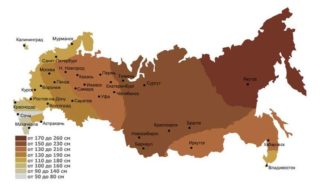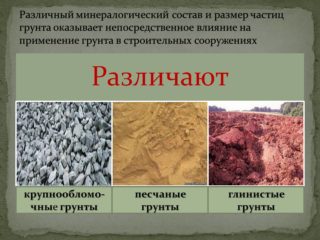In a city apartment or in a country cottage, people are accustomed to using electricity, water, and sewerage every day. At the same time, if electrification has affected the most remote corners of Russia, then the water supply system often has to be independently laid in private houses even near the capital. To avoid problems, it is necessary to build it in accordance with the technical requirements.
To what depth to bury a water pipe in a private house
The standards provide for the placement of highways at a depth of at least 0.5 m from the surface, in order to protect pipelines from mechanical damage by vehicles. To prevent a rupture of the water supply system when the soil freezes, the standards for laying according to SNiP establish for all regions the occurrence of water pipelines also 0.5 m deeper than the lower point of soil freezing. Freezing maps have been developed for all regions and regions of Russia.
The standards allow laying a water supply system in a frost layer if the transported water is protected from freezing by continuous circulation or heating electric cables. In this case, the cable is laid over the pipe.
SNiP recommends the optimal combination of water pipelines with heating plants, as well as the maximum reduction in their length.
The standards for laying down SNiP are based on scientific calculations and many years of experience in the construction of communications. The use of building codes ensures the reliability and durability of the water supply network.
5 factors affecting the depth of the water supply

When supplying water in a private house, it is important to decide to what depth to bury the water pipe in the ground in order to avoid its freezing in winter and overheating in summer. Correctly calculated water conduit depth reduces construction costs and avoids operational problems.
If a wide sewer pipe during freezing can be melted by letting hot water through it, then the ice plug formed in the water conduit is almost impossible to detect and remove. We'll have to wait until it melts on its own by the end of May, when the deep layers of the soil finally warm up to positive temperatures.
An increase in temperature in the cold water supply system in summer is also extremely undesirable - this leads to the multiplication of pathogenic bacteria in drinking water - for them the optimal value is 25-50˚С. The water becomes unusable. The level of the line must prevent overheating of cold pipes and excessive cooling of hot ones.
When planning a water supply system on a site even at the stage of building a house, factors affecting the depth of laying highways should be taken into account.
- climatic zone: average depth of soil freezing, height of snow cover;
- terrain relief;
- soil structure, depth of groundwater;
- appointment: permanent or seasonal;
- pipe material, presence or absence of insulation.
Influence of the climatic zone on the pipe laying depth
Russia is located in 4 climatic zones, plus a special one - the zone of the northern territories. Temperatures, rainfall and sunny days are different everywhere. The depth of soil freezing up to 0 ° C in the regions of Russia differs significantly.
- southern - 0.85 m;
- central - 1.6 m;
- northern - 2.75 m.
To determine the depth of the water supply system in a private house, you need to see the average freezing temperature on the site on the map and, according to SNiP, add another 0.5 m. The resulting number is optimal for the area.
Site relief
The soil in areas of terrain with relief drops freezes more than on a flat surface, so the depth of the pipes must be increased.
Excessive deepening of the water supply system is undesirable. Excessive soil pressure is created on the pipes, which can cause an emergency. In addition, it requires additional construction costs, complicates the repair of the water supply system in the event of leaks.
Soil type
For the Russian central strip, the depth of the water lines will be:
- stone soil with coarse fractions: the most significant freezing, depth of laying - 1.9 m;
- gravel: significant freezing, laying depth - 1.7 m;
- sand: average freezing, depth of laying - 1.6 m;
- clay soils and loams freeze through a little, it is allowed to lay communications at a depth of 1.3 m.
When arranging water pipelines in areas with special conditions (for example, seismic hazardous areas, permafrost conditions, mining workings or mines), it is necessary to be guided by the building codes developed for these areas.
In the southern regions, a minimum depth of 0.5 - 1 m is allowed. This guarantees the protection of the line from mechanical stress.
In the northern regions, the depth of water supply networks increases significantly.
Purpose of the trunk
Plumbing increases the comfort of living in a private house at any time of the year. If it is necessary to use it only in the summer season, the system is laid either on the surface of the earth, or at a depth of up to 0.5 m. When laying, plastic flexible pipes and hoses are used, it is disassembled for the winter, water must be drained.
To calculate the depth of laying water pipes in a private house, you need to familiarize yourself with the regulations applicable in this area. A permanent water conduit is laid taking into account all factors affecting the level of burial.
Pipe material

The type of soil, the depth of the pipeline, high requirements for frost resistance, the project budget are parameters that determine the material from which the pipes are made.
- loose sandy and clayey soils allow the use of pipes made of various types of plastic;
- rocky soil of increased density requires the use of steel pipes or laying plastic pipes using the puncture method (placing a flexible pipe inside a durable metal pipe).
When laying a water supply system at a considerable depth below the level of freezing of the soil, it is necessary to select pipes that can withstand the pressure of the soil. It is necessary to pay attention to the load that flexible pipes can withstand without reducing the quality and shortening the service life. Steel, cast iron and copper pipes are designed for maximum stress. But the high price, the tendency to corrosion, the complexity of installation and repair reduce the scope of their application.
Plastic pipes can be used at a depth of 8 m, but the service life is drastically reduced. As a rule, flexible pipes made of propylene are laid to a depth of 3 meters.Pipes made of low pressure polyethylene can withstand up to 10 atmospheres and are suitable for use at any depth.










